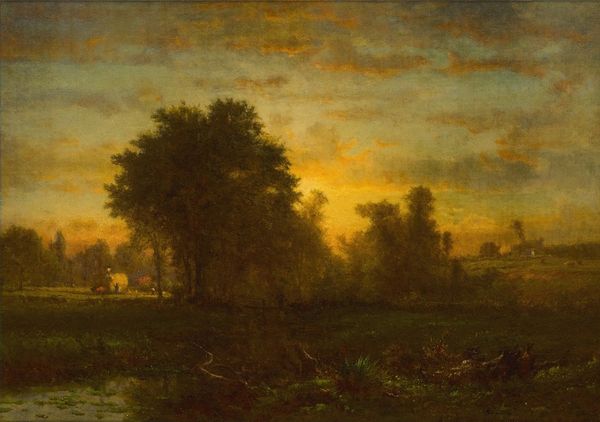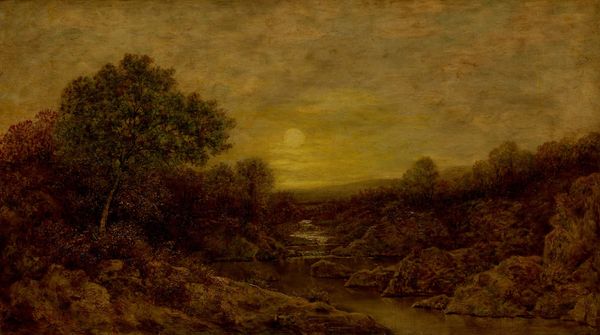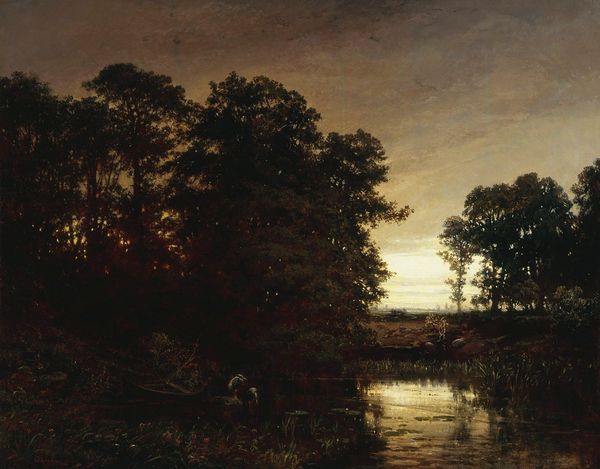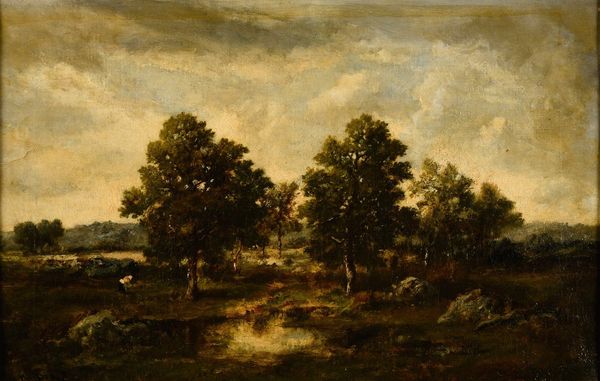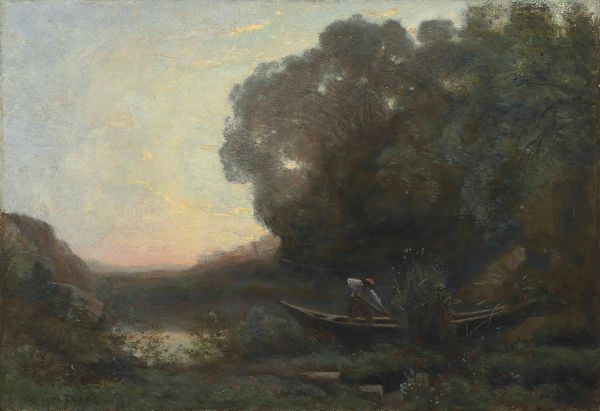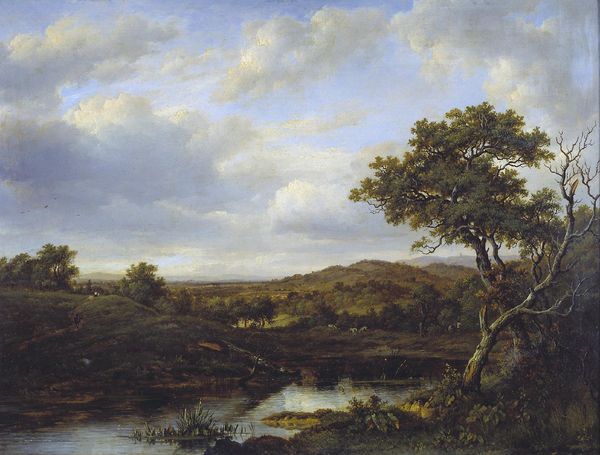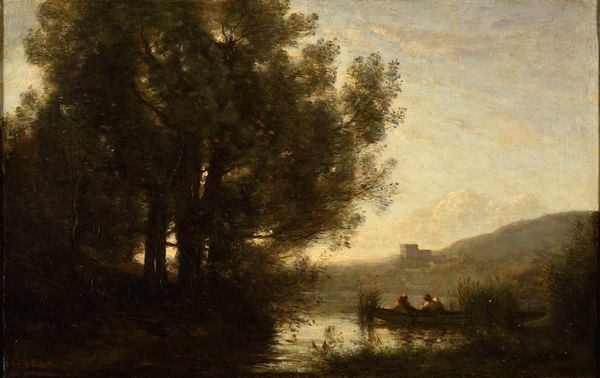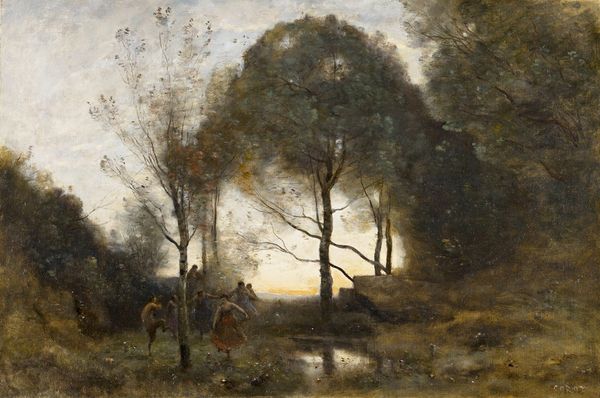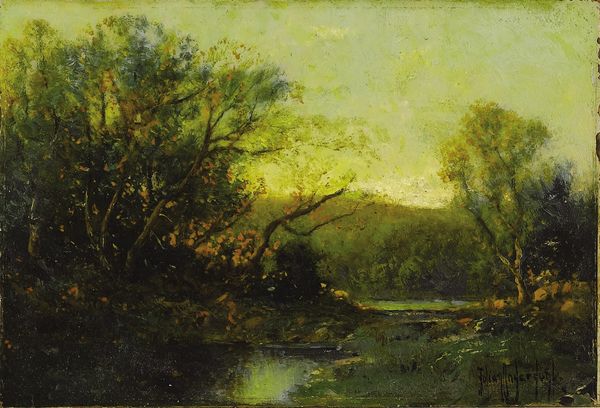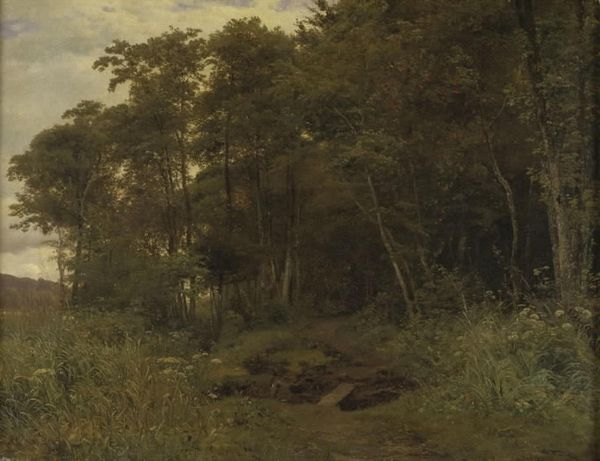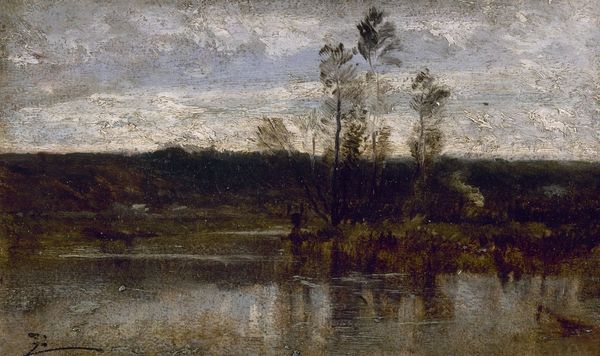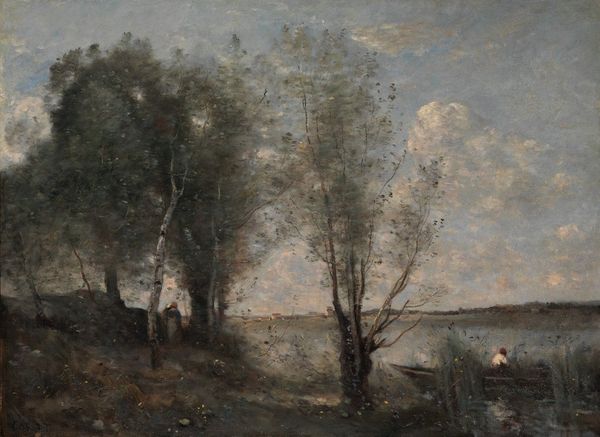
plein-air, oil-paint
#
plein-air
#
oil-paint
#
landscape
#
impressionist landscape
#
oil painting
#
forest
#
romanticism
Dimensions: height 18.4 cm, width 25.8 cm, thickness 1.1 cm, depth 7.2 cm
Copyright: Rijks Museum: Open Domain
Curator: Looking at Louwrens Hanedoes's "View in the Woods at Sunset," painted in 1849, currently housed in the Rijksmuseum, what are your immediate thoughts? Editor: A stillness. The paint handling makes the sunset feel almost like a hazy memory, the way the light kind of blends across the trees. There's something melancholy here. Curator: I think you’re right to pick up on the light; there's a real tension present. This piece aligns with the Romanticism movement, but look at how Hanedoes rejects grandiose depictions of nature. There is instead this subtle observation. We have to remember the Netherlands in 1849 was not a place of massive economic upswell; rather, a time of growing class consciousness and emerging social movements. It speaks to a more human connection with landscape, stripped from power or ownership. Editor: So, thinking about it from a materiality perspective: how accessible were paints for artists at this time? What kind of pigments would Hanedoes likely have had access to achieve those muted, almost sepia-toned yellows and browns? I’m always interested in the social and economic side of color. Were there any local materials that might have found their way into the composition? Curator: That is precisely what's intriguing: Hanedoes likely worked en plein air. How does the shift in landscape painting toward the direct observation, affect or mirror, cultural shifts towards valuing empirical evidence? Did working on site allow the artist more liberty, but equally provide fewer protections in patronage or oversight? It begs us to consider where, and how this "view" was intended to circulate within an early art market? Editor: Good questions. Seeing brushwork like this up close suggests it was perhaps done relatively quickly. Makes you wonder about the weather that day and the logistics of transporting painting equipment! To me that’s exciting: those decisions, those practical struggles become ingrained into the image itself. Curator: Exactly. What at first might seem like a placid scene becomes a nexus of socio-historical and material relationships. What were once seen as quiet landscape pieces now take a larger stage. Editor: And recognizing that unlocks a whole new layer to appreciating this quiet "View." Curator: It does give you a fresh view on the piece itself, doesn't it?
Comments
No comments
Be the first to comment and join the conversation on the ultimate creative platform.
